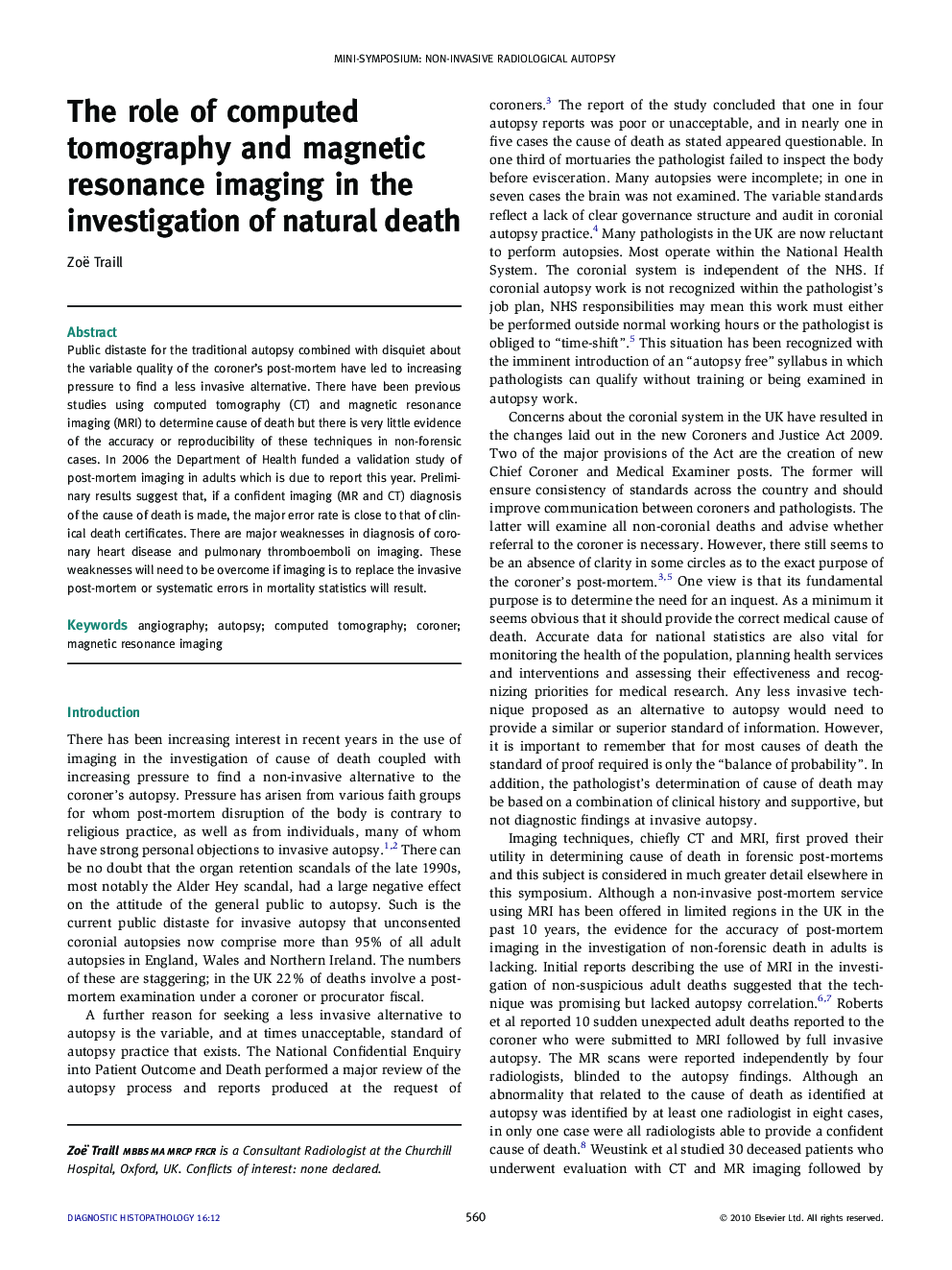| Article ID | Journal | Published Year | Pages | File Type |
|---|---|---|---|---|
| 4131327 | Diagnostic Histopathology | 2010 | 5 Pages |
Public distaste for the traditional autopsy combined with disquiet about the variable quality of the coroner’s post-mortem have led to increasing pressure to find a less invasive alternative. There have been previous studies using computed tomography (CT) and magnetic resonance imaging (MRI) to determine cause of death but there is very little evidence of the accuracy or reproducibility of these techniques in non-forensic cases. In 2006 the Department of Health funded a validation study of post-mortem imaging in adults which is due to report this year. Preliminary results suggest that, if a confident imaging (MR and CT) diagnosis of the cause of death is made, the major error rate is close to that of clinical death certificates. There are major weaknesses in diagnosis of coronary heart disease and pulmonary thromboemboli on imaging. These weaknesses will need to be overcome if imaging is to replace the invasive post-mortem or systematic errors in mortality statistics will result.
